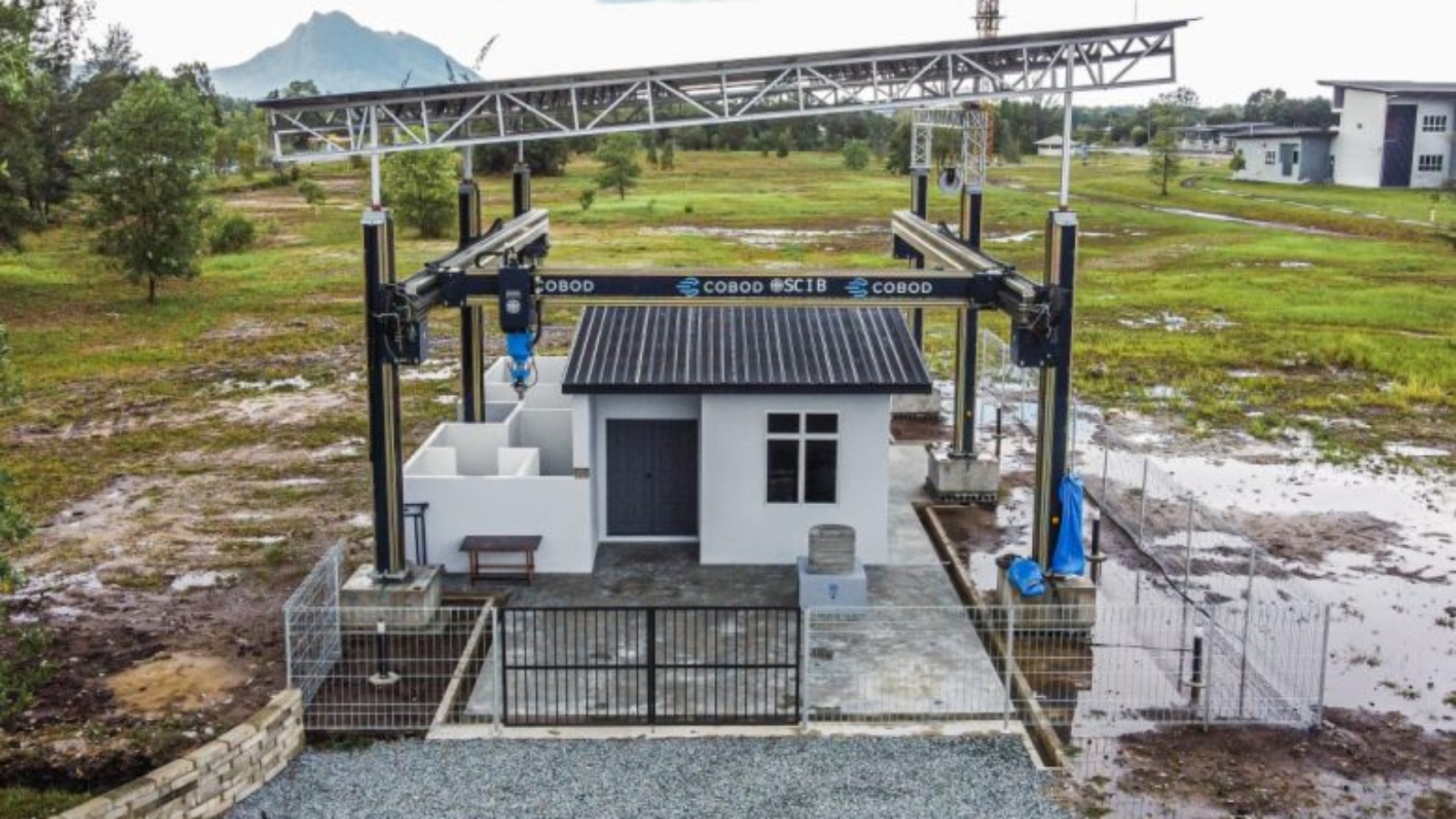Borneo, known for its orangutans and other wildlife, is one of the most biodiverse places on earth, with more than an estimated 15,000 plant species found in its rainforests. Unexpectedly, this large Asian island now has its first 3D printed house – a testament to the technology’s potential and reach. In Sarawak, the Northern coastal part of Borneo, which is more urbanized than the rainforest-covered center, the large concrete pre-casting company Sarawak Consolidated Industries Berhad (SCIB) recently revealed the company’s first 3D printed demo house.

The house consists of a built area of 1000 square feet (90m²), and was printed in 46 hours using the BOD2 3D construction printer from Danish-based COBOD International. The total length of the print was over 9km, extruded layer by layer, on top of each other, with a total of 145 2cm layers. The SCIB team chose to plaster the outside walls of the house, which is normal practice in the region due to the high humidity. Plaster is also easy to wash and clean when green algae grow on the walls, which often occurs due to climate conditions.
COBOD’s construction printers have proven printing capabilities around the world – including India, the Middle East, Africa, Europe, and North America.
Manufacturing on Demand

“When we created COBOD, we never envisaged, that we would have a market in a place like Borneo. The fact that our technology is now applied there shows, that the market for our technology is endless. When we can sell our printers in Borneo, we can sell them anywhere,” said Simon Klint Bergh, Head of Asia-Pacific for COBOD.
The new 3D printed house in Borneo is located on the premises of the Malaysian Construction Industry Development Board (CIDB), which is the permitting body in Malaysia, at their training arm premises Malaysian Construction Academy (ABM) in Kuching, Sarawak, and was built in collaboration with the agency.
“The use of technology such as 3D printing comes at a time when businesses are being scrutinized for the impact of their operations on the environment and society. Businesses have an important role in society and an important part is to operate responsibly. We believe 3D construction printing can be part of this and therefore we are also involved in a program with our university partner to develop and improve the skills and knowledge of the construction industry,” said Rosland Othman, Group Managing Director and Chief Executive Officer of SCIB.
“At COBOD International we are proud to have SCIB as our customer and to see them execute a first building. SCIB is a very innovative company and with our technology, we are excited to see SCIB enable faster execution of construction projects, as well as more efficient construction at a lower cost. This will be the first of many 3D printed houses to come in Asia- Pacific,” said Simon Klint Bergh.
You might also like:
CyBe to build first-ever 4-story 3D printed building in Eindhoven: To be clear, the building will not be 3D printed on location as several other 3D construction printing hardware providers do. It will be assembled by Prefabricated Prefinished Volumetric Construction (PPVC), which is a way of constructing completed and finished units off-site for on-site installation. Using this modular construction technology, 3D units are produced in controlled factory settings with optimized construction methods and building materials.
* This article is reprinted from 3D Printing Media Network. If you are involved in infringement, please contact us to delete it.
Author: Edward Wakefield


Leave A Comment